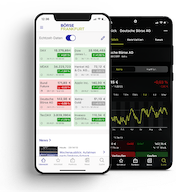"Momentum ETFs: Long-term strength and structural blind spots"

Why trend followers shine in the long term – and reveal glaring weaknesses in certain market phases. Ali Masarwah, fund analyst and managing director of financial services provider envestor, discusses why momentum, another counterintuitive strategy, is outperforming traditional indices.
Momentum: A recipe for success that relies on the rearview mirror
11 August 2025. FRANKFURT (envestor): Everyone is familiar with the truism that appears beneath every performance chart in fund and ETF advertising: past performance is not indicative of future results. Well, they often are – if you approach it the right way. Funds or ETFs with momentum or trend-following strategies invest in yesterday's winners, assuming that they will also be tomorrow's winners. The thesis is correct: momentum strategies are among the most reliable return factors in the long term. Momentum ETFs are therefore no longer niche products.
The momentum factor was first discovered in 1993 by Narasimhan Jegadeesh and Sheridan Titman. They demonstrated that stocks that had performed particularly well over the previous three to twelve months continued to generate above-average returns, while underperformers lagged behind. Why this is the case is not yet fully understood, but the prevailing opinion is that it is due to the herd instinct of investors. What has risen is further “pushed.” In technical terms, momentum is the thorn in the side of the efficient market hypothesis, whose guiding principle is homo economicus, i.e., the actor who always acts rationally. In this respect, this counterintuitive strategy is similar in some ways to its opposite, the low-volatility factor, which we recently presented here.
Momentum ETFs are typically implemented in a systematic two-phase model. Both six-month and twelve-month returns are taken into account. The result is a portfolio that reliably bets on the strongest trends during boom phases – and thus often outperforms the overall market. There are many other variations of this strategy, such as long-short models or approaches with more or less strict limits. Most momentum ETFs have set fairly narrow limits at the sector level to ensure a minimum level of diversification.
So, what's the catch?
There's a “structural blind spot” with momentum strategies. They're backward-looking. What was strong yesterday gets weighted heavily today—even if the upward trend is already fading. In a market that turns abruptly or, worse, constantly changes direction, trend followers get caught off guard.
Looking back over the past twenty years, the MSCI World Momentum Index has significantly outperformed the MSCI World: 650 percent versus 405 percent (calculated in US dollars). A textbook example of the long-term strength of this factor was the boom phase between 2009 and 2021.
The outperformance in 2019 and 2020 was particularly impressive, when tech stocks such as Apple, Microsoft, and Nvidia were heavily weighted in momentum strategies. During this period, momentum ETFs were fully aligned with the trends of digitalization and pandemic beneficiaries.
However, there were repeated phases of setbacks during the long bull market. In 2022, the interest rate turnaround put tech and growth stocks under sudden pressure. In the first half of this year, tech stocks slumped again so sharply after the recovery in 2023 and 2024 that the momentum index significantly underweighted them in June – meaning it was unable to benefit from the strong tech performance in July. Conversely, energy and value sectors were slow to enter momentum portfolios in 2022.
The current year, in turn, brought a different problem for momentum strategies: although the market did not fall into a bear market, it fluctuated sideways in many segments. The result was sector rotation without a clear leadership style – momentum ETFs were virtually stuck in neutral at times due to the high level of reallocation. The chart below shows how strong sector rotation can be over the years in a momentum ETF that tracks the global MSCI.

Momentum – a premium for “sideways risk”?
The premium that investors receive for momentum strategies is real, but so is the risk of lagging significantly behind the general market during supposedly boring sideways phases. This is particularly true of long-short strategies, which imploded at turning points after the crisis in March 2003 and again in spring 2009. Even if the term “momentum” suggests otherwise, these strategies are remarkably sluggish when market direction is volatile. If the future resembles the past—i.e., if the markets as a whole rise—market momentum (which is also familiar to capitalization-weighted indices) is amplified by momentum strategies. But woe betide momentum ETFs if they encounter fickle investors who cannot make up their minds. Then it is usually the hour of their antipodes, low-volatility strategies.
By Ali Masarwah, 11 August 2025, © envestor.de
About the Author
Ali Masarwah is a fund analyst and managing director of envestor.de, one of the few fund platforms that pays cashback on fund distribution fees. Masarwah has been analyzing markets, funds, and ETFs for over 20 years, most recently as an analyst at the research firm Morningstar. His expertise is also valued by numerous financial media outlets in German-speaking countries.
This article reflects the opinion of the author, not that of the editorial team at boerse-frankfurt.de. Its content is the sole responsibility of the author.

More articles from this columnist
| Time | Title |
|---|




